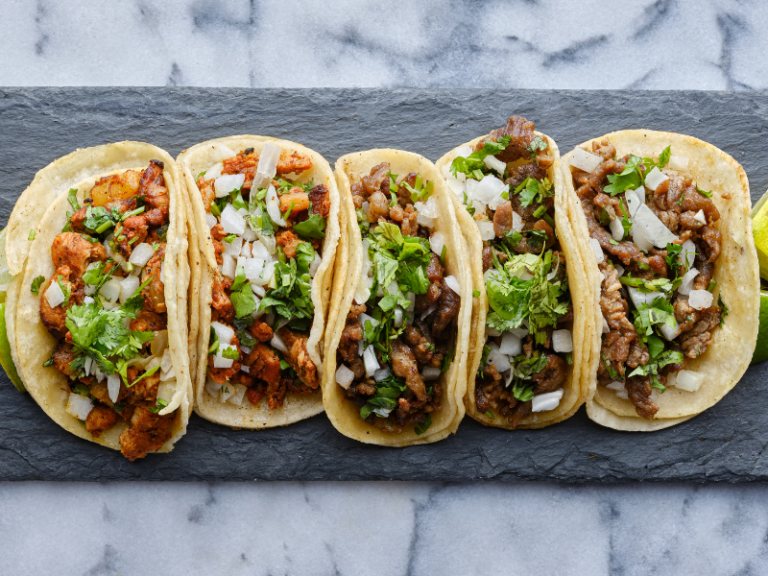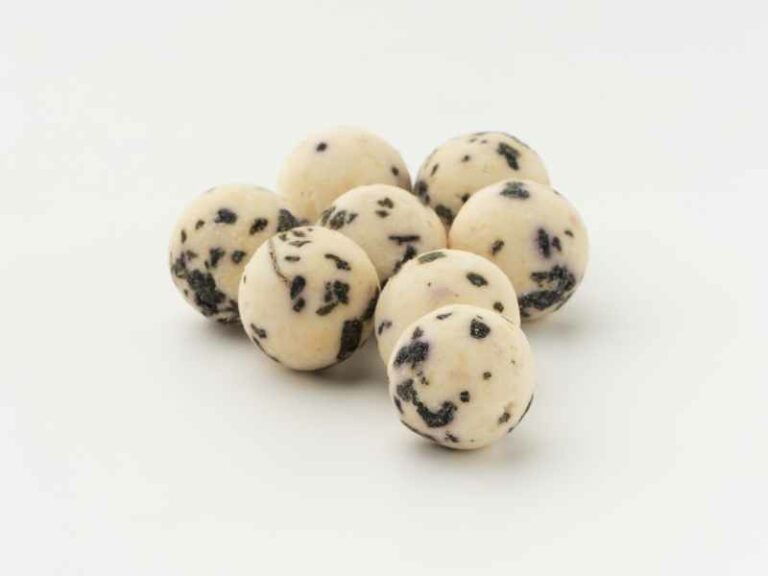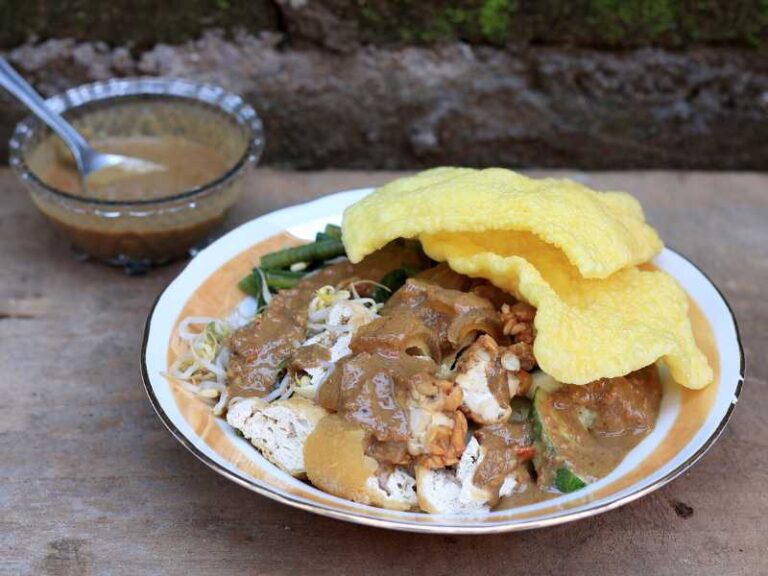Traditional Lechon Recipe (Suckling Pig)
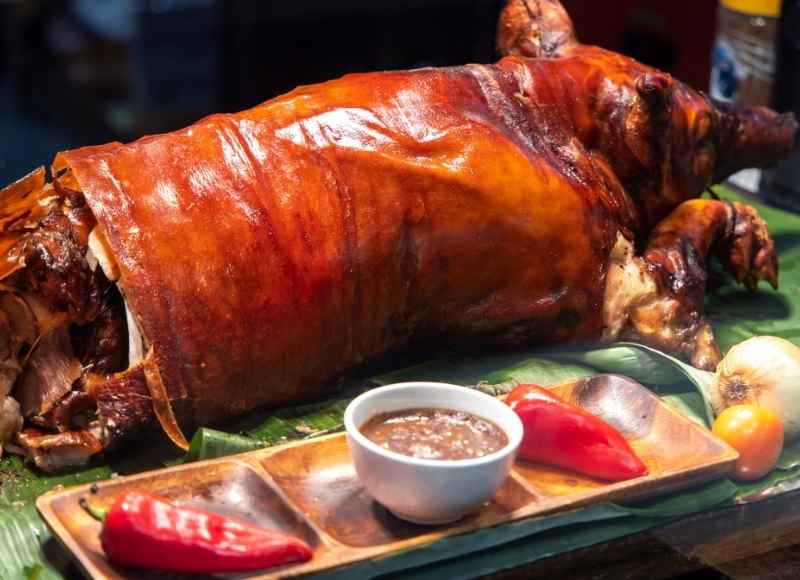
Lechon is a pork dish, typically cooked using a whole pig on a spit roast, that is popular in the Philippines, Spain, Cuba, Dominican Republic and other former Spanish colonies.
After spinning slowly around a fire for hours, the meat of a Lechon is perfectly tender with a crispy (albeit slightly chewy) skin.
What Does Lechon Mean?
The world Lechon comes from the Spanish word “leche“, meaning milk because the dish was typically made from baby pigs who are still nursing from their mothers.
Nowadays many regions use adult pigs instead of suckling ones to prepare their lechon, namely the Philippines, Taiwan and Madagascar.
For Filipino locals, the word Lechon relates to spit-roasting. Although it also includes cows and goats, the pig being the absolute favourite in Filipino cuisine, has come to be associated with the name “Lechon.”
If you are confused and wondering which region this dish really belongs to, don’t be! We have you covered…
History & Cultural Significance of Lechon
This charcoaled roasted pork is widely eaten and loved by the people of Spain, the Philippines, Puerto Rico and Cuba. And that often raises the question of the origin of Lechon.
The widespread belief is that the Spanish brought Lechon to the Philippines during their rule and left it there for the Filipinos to cherish.
Some people also believe that the origin of Lechon is actually the Philippines, but it was the Spanish who actually invented it during their time over there.
We do not know what’s true, but we do know that the Spanish created it, and the Filipinos gave it the love it deserved. So much so that no festival of theirs is complete without it.
They not only serve this pork delight on their holidays, weddings, parties, birthdays and family gatherings but also give it as a gift on festivals such as Christmas and New Years.
Lechon for the people of the Philippines represents festivity, happiness and collectiveness. You rarely find them serving it as an everyday food.
The Filipino variant of Lechon consists of an entire pig instead of a piglet and is called “Philippine Lechon”. The pig is filled with tamarind, lemongrass, garlic and other stuffing, and is placed on a spit and roasted.
Soy sauce is a popular choice for dipping in some areas of the Philippines. Some also like to pour it over the pig before roasting it.
Since it needs to be crackling and crispy on the outside and juicy from the inside, slow roasting is the only way. So, depending upon the pig size and the stuffing inside, a Philippine Lechon can take anywhere between 2.5 hours and 6 hours to cook.
The more evenly brown (bordering on caramel) the skin is, the better the results. And the crackle this skin creates is music to the ears.
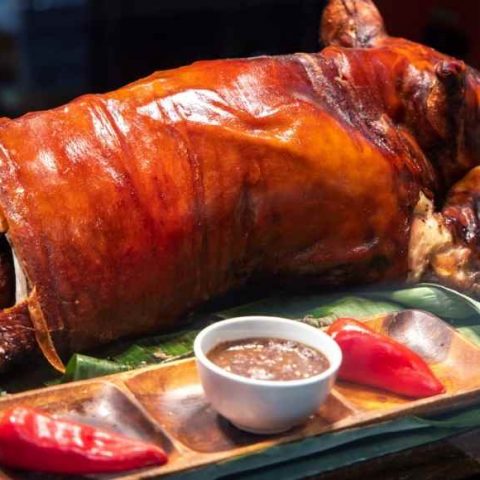
Traditional Lechon Recipe (Suckling Pig)
Lechon is a pork dish, typically cooked using a whole pig on a spit roast, that is popular in the Philippines, Spain, Cuba, Dominican Republic and other former Spanish colonies.
Ingredients
- Whole pig (approximately 20kg) - 1
- Soy sauce - to taste
- Salt - 600-700g
- Pepper - 600-700g
For Stuffing:
- Lemongrass - 10-15 bundles
- Bay leaves, cut into small pieces - 6
- Star anise - 60-65ml
- Garlic, crushed - 1 1/4 kg
- Green onion leaves - 2kg
- (optional) Halved saba bananas, boiled to half cook - 8 pieces
For Glazing:
- 7up - 1 litre (the magic ingredient)
Instructions
- Start by removing the entrails of your pig and its hair (scalping).
- Wash the pig clean with boiling water.
- Rub salt and pepper on the meat thoroughly and rub the insides with soy sauce.
- Now, stuff the insides with bay leaves, star anise, garlic, green onion leaves, and halved saba bananas. Also, stack lemongrass right in the centre of the stomach.
- Stitch the belly carefully to ensure the juice/stuffing stays inside while cooking.
- Next, skewer the pig on the bamboo stick and start roasting it over hot charcoal.
- Make sure the pork belly isn’t directly beneath the hot charcoal and that you are rotating the skewer slowly.
- Continue to glaze the pig with 7up using a sponge (to have that delightful crispy skin).
- Cook for 3-4 hours until the meat is tender but make sure the skin stays a nice caramel colour.
Nutrition Information:
Yield: 30 Serving Size: 1Amount Per Serving: Calories: 35471Total Fat: 467gSaturated Fat: 196gTrans Fat: 0gUnsaturated Fat: 251gCholesterol: 5mgSodium: 5428985mgCarbohydrates: 9010gFiber: 3553gSugar: 96gProtein: 1471g

